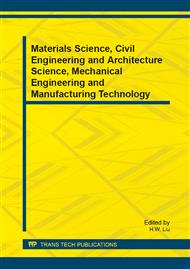[1]
Zizhong Lu, Chunshan Ji and Wenzhen Tang. Ceramic fiber products and their applications. Aeronautical manufacturing technology, 2005 (6): 55-57.
Google Scholar
[2]
Jun Zhu. Focus on the development of ceramic fiber and the future. Shanghai building materials, 2011 (1): 24-27.
Google Scholar
[3]
Xitang Wang, Baoguo Zhang and Zhoufu Wang. Bio-soluble CaO-MgO-SiO2 system ceramic fibers. Journal of wuhan university of science and technology, 2008, 31 (3): 238-241.
Google Scholar
[4]
Xuezheng Cui. The technical trend of ceramic fiber. Foreign refractories, 1997 (5): 7-11.
Google Scholar
[5]
Jun Zhu. Ceramic fiber outlook. Chemical Industry, 2011, 29 (4): 30-34.
Google Scholar
[6]
Yuan Shengyuan. The performance and product development of ceramic fiber. China textile leader, 2005 (5): 64-67.
Google Scholar
[7]
Meiya Lu. The innovation of refractory fiber. Foreign refractories, 1995 (11): 7-10.
Google Scholar
[8]
Dickson D J. Thermal insulation for energy storage[C]/Proceedings of the Institution of Electrical Engineers. IET Digital Library, 1971, 118(10): 1399-1407.
DOI: 10.1049/piee.1971.0263
Google Scholar
[9]
Langlais C, Silberstein A, Sandberg P I. Effects of moisture on the thermal performance of insulating materials [J]. Moisture control in buildings, 1994: 54-71.
DOI: 10.1520/mnl10154m
Google Scholar
[10]
Veiseh S, Hakkaki-Fard A, Kowsary F. Determination of the air/fiber conductivity of mineral wool insulations in building applications using nonlinear estimation methods[J]. Journal of Building physics, 2009, 32(3): 243-260.
DOI: 10.1177/1744259108099431
Google Scholar
[11]
Campanale M, De Ponte F, Moro L. The Thermal resistance of mineral wool products with density gradients: theory and experimental procedures[J]. Journal of building physics, 1997, 21(1): 68-90.
DOI: 10.1177/109719639702100107
Google Scholar
[12]
Qingren Wu, Lingke Zeng and Zhenqun Liu. Relations of the thermal conductivity coefficient and density of rock-mineral cotton insulating materials and temperature. Journal of ceramic, 1997, 18(3): 141-144.
Google Scholar
[13]
Qingfang Ma. Thermal physical engineer's handbook [J]. Agricultural machinery press, 1986: 809.
Google Scholar
[14]
Bomberg M, Klarsfeld S. Semi-empirical model of heat transfer in dry mineral fiber insulations. Journal of building physics, 1983, 6(3): 156-173.
DOI: 10.1177/109719638300600304
Google Scholar


